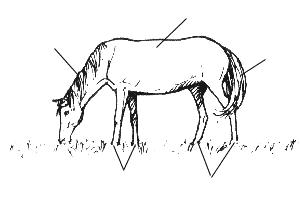New Wall Clock can transform the interior of your room, and for this it is not at all necessary to go around many stores in search of suitable options. I offer you a couple of lessons from which you can get ideas on how to decorate an old, boring clock or make unique new ones from a variety of easily accessible materials. In addition, they will be a good gift, especially for those of your friends or relatives who are not particularly punctual.
Master class No. 1
Very unique watches It can be made from an embroidery hoop and a set of decorative buttons. You have the opportunity to choose a fabric base that matches the color and texture of your interior, and use a collection of buttons of various colors and sizes lying idle.

- old clock or clock mechanism with hands;
- hoop;
- textile;
- buttons;
- tape or braid;
- (optional) cardboard or narrow board.
Take a clock mechanism or an old wall clock that you don’t mind disassembling and redoing. Remove the arrows and the nuts holding them together, and remember the sequence in which they are attached.
2: Hoop the fabric, cut off the excess edges and sew on the buttons, positioning them in the same way as the numbers on the dial.
Now we need to secure the clock mechanism. Make a small hole in the middle of your dial and reverse side attach the mechanism so that the arrow mount is located in the center of the dial. In order to secure the mechanism, it is possible to cut a circle out of cardboard or wood, the diameter of which matches the hoop, and glue the mechanism to it. Or perhaps put it on a decorative ribbon, attach it to an embroidery hoop and make a small loop so that the clock can be hung on the wall. Screw the clock hands. Ready!
Step by step lesson #2
You can make these extraordinary wall clocks from old newspapers or magazines.
To work you will need:
- approximately 24 pages of uniform size, cut from old newspapers or magazines;
- pen or pencil;
- scissors;
- transparent adhesive tape;
- long needle;
- silk embroidery thread or floss thread;
- two clear plastic discs (from CD packaging);
- a circle cut out of cardboard with a hole made in the middle;
- clock mechanism with hands.
Take a pen or pencil and wrap a page from a newspaper or magazine around it. Make 24 such “tubes”. Secure the ends of the tubes with clear adhesive tape to prevent them from unraveling. Step back about a third from the end of the tube and bend it in half at this point.
Take a long needle, thread a silk thread (or floss) into it and pass the needle through the bent end of the tube. Pull the needle through and tie a knot at the end of the thread, then sew on the remaining 23 tubes, placing them in a circle.

Take a transparent disk and place it on top of the sewn tubes so that the hole in the middle is located in the center of the circle of tubes you have. After this, attach the clock mechanism, making sure that the place where the hands are attached coincides with the hole in the disk.
Turn the watch over and attach the second disc. Place cardboard on top and secure the clock mechanism with a nut.

Screw on the clock hands and you're done!
Another DIY wall clock
Such a watch with the unusual hands-legs of John Cleese from “The Ministry of Silly Walks” can be a good gift, which, due to the fact that the watch is designed in a neutral black and white style, will fit into virtually any interior.
- canvas size 20 x 20 cm;
- clock mechanism with hands;
- decoupage glue, brush;
- PVA glue;
- plastic (it is better to use plastic that does not bend well; for example, old plastic folders are excellent);
- printed and cut out numbers for the dial, and an image of John Cleese;
- awl;
- scissors and scalpel;
- wire cutters;
- dark marker.
Print the dial with the image of John Cleese (you can download the archive here) on an A4 page, cut the sheet to approximately 21 x 21 cm.
Lightly wet the image with water and allow it to soak in. Meanwhile, coat the canvas with glue. Carefully glue the wet image onto the canvas and smooth it out. After this, apply another layer of clear glue, press the edges of the paper and leave the canvas to dry. Once everything has dried, you can apply another layer of glue.
Cut out the legs according to the template, at the same time leave a margin of approximately 0.5 cm along the contour. Lightly wet the image with water and set aside to allow the moisture to be absorbed.
Take big piece plastic and apply glue to it, then carefully glue the legs cut out of paper, smooth out the image. Cover the painting with glue again and leave to dry overnight.
If you find that after drying the plastic is easily bent, the sheet thick paper and glue it on the back side.
Once the part is completely dry, take a scalpel and carefully cut out the image of the legs along the contour.
First of all, mark the middle of the canvas. After this, use an awl to make a hole in the center of the canvas. It must be large so that it is possible to insert a mount for the hands of the clock mechanism through it. Insert the mechanism from the reverse side and secure it with a nut.
If the set of your mechanism also includes an iron ring before fastening between the nut and the canvas, then so that it is not visible, it is possible to print the image of John Cleese again, cut out of it a circle of suitable diameter with a hole in the middle and glue it so that it closed the iron ring.

Take the clock hands and place them on top of the cut out plastic legs. Use a pencil to mark the places where you will need to make holes for attaching the arrows. If necessary, trim the arrows so that they are slightly smaller than the plastic leg figures, then glue the parts onto the arrows. Once the glue has dried, attach the hands and feet to your watch. If necessary, the fastening nut can be painted with a dark marker.
Ideas for inspiration
And finally, we offer you a couple more examples of how it is possible to decorate, remake or make a wall clock yourself - get inspired and create!

To create cozy home, there are many details that need to be thought through. First of all, this applies to interior and decorative elements, such as curtains, lamps, clocks and pillows. Today we propose to consider how to make a watch with your own hands. Anyone can make them. The main task is to install a large working mechanism; it is usually bought in a specialized store. Having an old watch will greatly simplify the task, because you can use its mechanism. Everything else depends on your skill and imagination.
Wall clock using decoupage technique (MK)
You can make a clock for the kitchen with your own hands from scrap materials. But if you want to create original product, then the decoupage style will become ideal solution . These watches look elegant and will become unique decoration for home interior. We offer interesting master a class that will help you create your own wall clock at minimal cost.

You also need to prepare:
- clockwork hands;
- wooden base (round or square);
- napkins and ready-made patterns on paper;
- acrylic paints;
- tassels;
- sponges and varnish.
Making a watch with your own hands in decoupage style is carried out in a certain sequence:
1. The workpiece is being processed . The base of the future product must be sanded using sandpaper and coated three times with white acrylic paint, it will serve as soil.

2. When the paint has dried, retreat a couple of centimeters from the edge of the workpiece and outline the future framework .
 We outline the frame
We outline the frame 3. The base is given texture , choose a paint color that best suits the interior. The paint is diluted and applied with a sponge in a chaotic manner to age the product.
 Apply a second coat of paint
Apply a second coat of paint 4. The frame of the future watch stands out more dark color , brown paint is ideal for this.
 Painting the frame
Painting the frame 5. From prepared rice paper pattern is cut out and applied to the workpiece . If a napkin is used, then it is soaked in water and applied to the selected place on the dial. Glue is applied over the image.
 Glue the image
Glue the image 6. Now you need to use your imagination and make sure that the drawing fits organically into the surface. Paints of appropriate tones and a sponge will help here. With their help is created smooth transition from the pattern to the surface of the dial. It is important to be extremely careful; if you cope with this task, then you are a great master.
 Making a smooth transition
Making a smooth transition 7. At this stage the product needs to be aged , to do this, apply a two-component cracking agent to the surface with a dry brush (you can buy it at a store that sells craft supplies).
 Apply a layer of craquelure
Apply a layer of craquelure 8. After the craquelure dries, cracks will appear on the product, which will give it elegance. The workpiece is varnished as a protective layer.
 Varnish
Varnish At the end, all that remains is to install the arrows, the mechanism and glue the numbers (the latter can be drawn according to the template). Now the clock has a completed look; it can be used as decor for the kitchen, bedroom, or living room.
 The finished result
The finished result On video: making wall clocks using decoupage technique
Cardboard clock (MK)
Some needlewomen make their own kitchen clocks from cardboard.. Such a decorative item can become not just useful, but also an exclusive item. Before answering the question of how to make a clock out of cardboard, you need to make sure you have the appropriate materials.

To work you will need:
- thick cardboard;
- multi-colored caps or buttons;
- operating mechanism and arrows;
- compass;
- PVA glue.
To make your own wall clock, follow these steps:
1. Using a compass, make a circle on cardboard and then cut it out.
 Cut out a circle from cardboard
Cut out a circle from cardboard 2. Using glue, caps or buttons are glued in appropriate places.
 Glue the lids to the cardboard
Glue the lids to the cardboard 3. Numbers are depicted on the caps (use a marker or acrylic paint, depending on the material from which the parts are made).
 Drawing numbers
Drawing numbers 4. A hole is made in the center of the intended circle to install the mechanism and hands.
 Making a hole
Making a hole 5. The last step is to install the arrow mechanism. A battery is also inserted to operate the clock.

As you can see, you can make a clock out of cardboard very quickly and you don’t need any special skills, but such a decoration will complement the interior of the chosen room.
Quilling style product(MK)
A good option would be to make a watch in the quilling style. This type of arts and crafts uses paper strips of different widths and lengths.. They are twisted into patterns and a composition is formed. You can make a similar clock according to this scheme:
- The basis for the watch will be thick cardboard or plywood. Black paper is glued to the body. To create contrast, decorative elements are mainly created from white or light-colored paper. When choosing a color, take into account the interior of the room where the clock will be installed. They should fit harmoniously.
 This is what the finished product looks like
This is what the finished product looks like - Numbers are made from prepared strips of paper. To do this, use short strips. At the same time, decorative elements are twisted. Various compositions are used for decoration. These could be flowers or just patterns. It’s better to draw a sketch in advance, which will allow you to evaluate appearance future product.
 We twist paper strips into patterns and numbers
We twist paper strips into patterns and numbers 3. Created figures and decorative elements glued to selected places using PVA glue.
 Glue the finished elements to the base
Glue the finished elements to the base 4. A hole is made in the center of the base and a mechanism with arrows is installed.
 Installing the clock mechanism
Installing the clock mechanism Ideas for creating wall clocks vary. Focus on the materials that you have available, but there may be a lot of them. Acceptable use additional elements, be it lace, satin ribbons, beads, rhinestones or even stickers. A kitchen wall clock made of paper or other materials will allow you to always know the time. A made decorative element with my own hands will be pleasing to the eye.
As an idea you can try wrist watch, but in this case everything is much more complicated. This is due to their small in size. The best option This will be an experiment with straps. Combining chains of different thicknesses will allow you to create an original watch for your wrist. Also, zippers, elastic bands, and beads can serve as a decorative strap.
Clock made of paper and CD (2 videos)
Options for homemade watches (35 photos)





A new wall clock can transform the interior of your room, and for this it is not at all necessary to go around many stores in search of suitable options. I offer you several lessons from which you can get ideas on how to decorate an old boring clock or make original new ones from a variety of easily accessible materials. In addition, they will be an excellent gift, especially for those of your friends or family who are not particularly punctual.
Master class No. 1
A very original watch can be made from an embroidery hoop and a set of decorative buttons. You can choose a fabric base that matches the color and texture of your interior, and also use a collection of buttons of various colors and sizes lying idle.
You will need:
- old clock or clock mechanism with hands;
- hoop;
- textile;
- buttons;
- ribbon or braid;
- (optional) cardboard or thin board.

Take a clock mechanism or an old wall clock that you don’t mind taking apart and redoing. Remove the arrows and the nuts holding them together, while remembering the sequence in which they are attached.
2: Hoop the fabric, cut off the excess edges and sew on the buttons, positioning them in the same way as the numbers on the dial.

Now you need to secure the clock mechanism. Make a small hole in the middle of your dial and attach the mechanism on the back side so that the mount for the hands is located in the center of the dial. To secure the mechanism, you can cut a circle out of cardboard or wood, the diameter of which matches the hoop, and glue the mechanism to it. Or you can simply hang it on a decorative ribbon, attach it to an embroidery hoop and make a small loop so that the clock can be hung on the wall. Screw the clock hands. Ready!

Step by step lesson #2
You can make these unusual wall clocks from old newspapers or magazines.

To work you will need:

Take a pen or pencil and wrap a newspaper or magazine page around it. Make 24 such “tubes”. Secure the ends of the tubes with clear tape to prevent them from unraveling. Step back about a third from the end of the tube and bend it in half at this point.


Take a long needle, thread a silk thread (or floss) into it and thread the needle through the bent end of the tube. Pull the needle through and tie a knot at the end of the thread, then sew on the remaining 23 tubes, placing them in a circle.


Take a transparent disk and place it on top of the sewn tubes so that the hole in the middle is located in the center of the resulting circle of tubes. Then attach the clock mechanism, making sure that the place where the hands are attached coincides with the hole in the disk.

Turn the watch over and attach the second disc. Place cardboard on top and secure the clock mechanism with a nut.

Screw on the clock hands and you're done!

Another DIY wall clock
A watch like this with the unusual leg-hands of John Cleese from The Ministry of Silly Walks can be an excellent gift, which, due to the fact that the watch is designed in a neutral black and white style, will fit into almost any interior.
You will need:
- canvas size 20 x 20 cm;
- clock mechanism with hands;
- decoupage glue, brush;
- PVA glue;
- plastic (it’s better to use hard-to-bend plastic; for example, old plastic folders are perfect);
- printed and cut out numbers for the dial, as well as an image of John Cleese;
- awl;
- scissors and scalpel;
- wire cutters;
- black felt-tip pen.
Print the dial with the image of John Cleese (you can download the archive) on an A4 sheet, cut the sheet to approximately 21 x 21 cm.
Lightly dampen the image with water and let it soak in. Meanwhile, coat the canvas with glue. Carefully glue the wet image onto the canvas and smooth it out. Then apply another layer of clear glue, press the edges of the paper and leave the canvas to dry. After everything is dry, you can apply another layer of glue.




Cut out the legs according to the template, leaving a margin of approximately 0.5 cm along the contour. Lightly moisten the image with water and set aside to allow the moisture to be absorbed.
Take a large enough piece of plastic and apply glue to it, then carefully glue the legs cut out of paper and smooth out the image. Cover the picture with glue again and leave to dry overnight.
If you find that the plastic is slightly bent after drying, simply take a sheet of thick paper and glue it on the back side.
After the piece is completely dry, take a scalpel and carefully cut out the image of the legs along the contour.





First, mark the middle of the canvas. Then use an awl to make a hole in the center of the canvas. It should be large enough to allow the watch hand mount to be inserted through it. Insert the mechanism from the reverse side and secure it with a nut.
If your mechanism also includes a metal ring before attaching it between the canvas and the nut, then so that it is not visible, you can print the image of John Cleese again, cut out a circle of suitable diameter with a hole in the middle and glue it so that it covers metal ring.





Take the clock hands and place them on top of the cut out plastic legs. Use a pencil to mark the places where you will need to make holes for attaching the arrows. If necessary, trim the arrows so they are slightly shorter than the plastic legs, then glue the pieces onto the arrows. After the glue has dried, attach the hands and feet to your watch. If necessary, the fastening nut can be painted with a black marker.







Ideas for inspiration
And finally, we offer you a few more examples of how you can decorate, remake or make your own wall clock - get inspired and create!








Beautiful wall clocks are always a source of information about time, but they also decorate the interior of an apartment and give it a special charm.
Moreover, if you think that it is very difficult to make a wall clock with your own hands, then you are deeply mistaken. This is a very real task that almost everyone can do. After all, for such a watch you do not need to assemble the mechanism itself.
It is taken from old watches or taken out of cheap Chinese alarm clocks. And on this basis, you decorate them to your taste, taking into account the design of your apartment.What are wall clocks made of?
If you decide to make a wall clock yourself or make a grandfather clock with your own hands, then you need to know that this can be made from almost any material. Of course, the most popular is wood. Due to its properties, watches made of wood can be made in a variety of shapes and last a long time.
Usually, not only wall clocks, but also grandfather clocks are made from this material. By the way, drawings for making wall clocks are usually not required, but they may sometimes be needed for floor structures, having a more complex assembly.

Record clock
Plastic and other materials
Plastic watches are also popular. They are even more durable, but their production is more complex. Original watch can be made from cardboard, and the simplicity with which this can be done is surprising. As a material for a wall clock, you can use paper or, for example, gramophone records.
Note!
It’s quite possible to make a clock for the kitchen from a tin can.
There is a great variety of additional material, used mainly for making arrows. These could be tree branches, buttons, pencils or wire.

Cardboard clock
As we have already said, making cardboard clocks is quite simple, so we will now tell you how to make a clock from cardboard yourself. In order to implement this idea we will need following materials and tools:
- Clockwork. It can be pulled out of an old unnecessary watch.
- A piece of corrugated cardboard. Its dimensions depend on the dimensions of your future product.
- Wooden disk.
- , PVA glue, kraft paper (special high-strength wrapping paper).
- (fine-grained and possibly coarse-grained), hook, decorative elements.

Paper clock
Main stages of execution
First you need to take a disk made of wood (the same goes for wooden clock), and use a hammer drill to make a hole for the clock mechanism. After this, we cut out two circles from cardboard and glue them on both sides and in one of them we also make a hole for the clock mechanism.
Having made the base for the clock, you need to cover the ends of the disk with cardboard, cutting out a piece with a width equal to the thickness of the disk and a length equal to its circumference. We fix it with PVA glue. Then you need to cover the clock with kraft paper and, on the reverse side, fix the hook with which we will hang our product on a nail. By the way, a master class on watch making can be viewed below.
Final work
Now we need to paint our disk black. It will be enough to do this with front side. After the surface has dried, we make a hole for the arrows using an awl. Now we need silver paint, which contrasts as best as possible with the black color of the disk, and use it to apply the divisions and numbers on the dial. We paint the arrows with the same color. We finish our work by installing the clock mechanism and decorative decoration ends and edges of the disk.
Note!
This can be done, for example, using rhinestones.
As you can see from the instructions presented, almost anyone can make a watch from cardboard.

Wood clock
Let's look at how quickly you can make a wooden clock. To make them you will need the following materials and tools:
- Wooden disk with a diameter of 330 mm.
- Wooden sticks and balls of small diameter in the amount of 12 pieces.
- Clockwork.
- Sandpaper, glue, .
- Wire cutters and hammer drill.
- Black cardboard and paint in two colors.
- Pencil, scissors, ruler.

Step-by-step instruction
- Sand the disc and balls until smooth surface and wipe them free of dust.
- We cut the wooden sticks to the same length. We choose the length ourselves.
- Using a punch, we will make a hole in the center of the disk intended for the arrows.
- Drill 12 holes at the end of the wooden disk. They will serve as grooves for sticks with balls. The distance between the disks must be the same. To do this, you need to use a protractor and make marks every thirty degrees.
- Pour glue into the holes and fix wooden sticks in them.
- At this stage of making a wooden watch, you need to treat the surface with a primer and, after drying, apply several layers of paint. The paint color, in our case, should be white.
- Now we need to paint the balls red (it is most suitable for a white disk). To make this convenient, we will need a piece of foam plastic and the remains of our wooden sticks. We string balls onto them and paint them, after which we insert them into a piece of foam plastic and wait for them to dry. For painting we use a spray, since it is unlikely that it will be possible to paint evenly with a brush.
- After drying, insert the balls into sticks and “sit” them on the glue.
- The final step will be to install the clock mechanism on the back of the disc and fix the hands to it. We will make the arrows from thick cardboard, painted black.

This is interesting! do it yourself - master class
Paper clock
In order to make a clock out of paper we will need the following materials:
- Clock mechanism and hands.
- The dial is made of wood or other dense material.
- Paper for decoration and buttons.
- Decoupage glue (acts as glue, varnish and sealant), regular glue, paints.
- Small paper plate.
- Ruler, scissors, pencil, pen.
- Brush and foam brush.

Plastic watch
Manufacturing stages
Let's look at how to make a watch with your own hands step by step.
- First, we cut the paper (choose the color that suits you), in the shape of an elongated trapezoid, along the length of the dial. In this case, all pieces must be the same in size and shape. The total area of the paper should be larger than the dial, so that later you can bend the ends. Then we fix the paper to the dial with decoupage glue and wait for it to dry. After this, we bend and glue the hanging ends to the back of the dial.
- Apply decoupage glue to the surface of the dial in several layers. Each subsequent layer is applied to the previous one, but after complete drying. At correct application, the surface of the dial will become glossy.
- We mark the dial. This is conveniently done using a paper plate. That is, first we mark all the dots on the plate, then we apply it to the dial and put the dots on it. After that, in place of the numbers, we glue, for example, buttons or something else that your imagination is designed for.
- The final stage will be painting the hands in the desired color, most suitable to the design of the watch being made, and connecting them to the clock mechanism. At this point the work will be completed and you will receive the watch original design own production.
DIY wall clock video:
In contact with
See inaccuracies, incomplete or incorrect information? Do you know how to make an article better?
Would you like to suggest photos on the topic for publication?
Please help us make the site better! Leave a message and your contacts in the comments - we will contact you and together we will make the publication better!
WITH early age The child needs to be taught the concept of time. Watches made from scrap materials will help you master this science. This toy will allow the child to set the arrows and study the numbers himself. It is better to make such a craft together with your child, so that while working, you can explain to the child the purpose and structure of the dial itself. In addition, making a dial will help develop fine motor skills, accuracy when working with glue, creativity, imagination and imagination of the child. Today we will introduce you to various options making a dial and will tell you how to make a clock out of cardboard, and for older children we will help you assemble a functional model with a clock mechanism. Making a clock out of cardboard with your own hands is not at all difficult, and if a small child accidentally damages the craft, you can always make a new one using available materials and our recommendations.
Option one: Cardboard clock for a baby
A preschooler can make a children's clock with his own hands from cardboard. A homemade toy clock will help your child move the hands himself and become familiar with their purpose.
Materials for work
To make this model you will need the following materials:
- Colored cardboard.
- Scissors.
- Colored paper.
- Pencils, felt-tip pens, marker.
- PVA glue.
- A small bolt and nut.
- Compass.
- Decor for crafts - acrylic pearlescent paints, glitter, etc.
Step-by-step instruction:
- Take one sheet of thick cardboard, which will be the basis for creating the dial.
- Cut a circle out of cardboard using a compass or large plate.
- Do the same manipulations with a sheet of colored paper.
- Glue the colored paper dial onto the cardboard base.
- Cut out a smaller circle from paper of a different color and glue it inside the future dial.
- Cut out two arrows from thick cardboard: one shorter, the other longer.
- Glue strips of colored paper onto the arrows.
- On the dial, legibly write the numbers indicating the hours, and use a marker to write smaller numbers for the minutes.
- Make a small hole in the center of the dial and secure the clock hands with a bolt and nut.
- Decorate your watch with decorative elements.

- Let your child decorate his first watch himself. You can decorate the dial themed pictures, corresponding to the time, for example, at 2 o’clock it’s time to eat (a plate of food), and at 10 o’clock it’s time to sleep (bed). Such drawings will help the child remember the time faster.
- Do not tighten the nut too much on the back side of the dial, otherwise the hands will not move.
- A DIY watch for children can be made in the shape of any object, for example, in the shape of a flower or a starfish. Simply glue the dial onto any suitable cardboard base.
- If you place geometric figures all over the dial, then your homemade watch will turn into a universal teaching aid.
- You can use a disposable paper plate for the base of the dial. Secure the arrows made of thick cardboard with a bolt and nut, and draw large and bright numbers in a circle.
- If the numbers are made from plasticine, they will be more convex and brighter.
- You can stick a white circle for a dial on a paper plate that is too bright, and replace the bolt and nut with plastic-coated wire.
Option two: Active function clock
For an older child, you can make a functional model with a working clock mechanism. These watches can also be used as a decorative item.
Materials for work
To make a clock out of cardboard so that the hands rotate, prepare the following materials for work:
- Thick cardboard. You can also use a sheet corrugated cardboard, for example, from a box or crate.
- Multi-colored yogurt (vitamin) caps or large buttons.
- Compass.
- PVA glue.
- Clock mechanism with hands from any cheap version of quartz watches.
The manufacturing process is as follows:
- Prepare a sheet of thick cardboard and place colorful caps on it to get an idea of what the size of the future watch should be.
- Cut out a base circle from cardboard.
- Using an angled ruler, mark based on the location of the caps.
- Glue the caps (buttons) to the base at an equal distance from the center and each other.
Important! For gluing plastic parts You can use a hot glue gun or PVA glue.
- Write numbers indicating time on the lids with a marker. If the material of the parts allows, then you can use acrylic paint.
- Make a hole in the center of the circle.
- On back wall watch, install the clock mechanism and screw the hands.
- Insert the battery into the clock and set the time.
Important! The edges of the circle can be outlined with a colored or black marker. You can glue a cardboard circle with a number in the center of each cap, rather than applying it to the part with a marker or paint.
A handmade watch can become a wonderful element of interior and decor. We invite you to familiarize yourself with the following version of the watch model, which can become an original and unique decoration for your home.
Option three: Wall clock using decoupage technique
Anyone can make a model of a wall clock, the main task— install a large working mechanism.
Important! Having an old clock will greatly simplify the task, since you can use its mechanism, and if there are no old models in the house, then purchase a clock working mechanism in a specialized store.
You can make a chronograph from any available materials. But, if you want to create an elegant and unique product, then the decoupage style will be the ideal solution.
To work you will need:
- Wooden base (square or round).
- Clock mechanism with hands.
- Napkins for decoupage.
- Acrylic paints.
- Sponges, brushes.
- Sandpaper for processing the workpiece.
Master Class
Making a watch in decoupage style is carried out in the following sequence:
- Sand the base of the future workpiece using sandpaper.
- Cover the processed workpiece three times with acrylic paint. The coating will serve as a primer.
- Give the paint time to dry.
- Step back a couple of centimeters from the edge of the workpiece and mark the future frame.
- Choose a paint color for the base that best suits the interior. Dilute the paint and apply it with a sponge in a chaotic manner to age the product.
- Highlight the frame of the future chronometer with a darker color. Brown paint is ideal for this purpose.
- Cut out a pattern from the prepared rice paper and apply it to the workpiece. If you use special napkins for decoupage, first soak them in water and apply them to the selected place on the dial.
- Apply special glue over the image.
- Using paints of appropriate tones and a sponge (brush), create a smooth transition from the pattern to the surface of the dial. Use all your imagination and carefully make the drawing fit organically into the surface.
Important! If desired, you can age the product using a two-component cracker. Use a dry brush to apply the product to the surface (you can buy it at a craft store). After the craquelure dries, cracks will appear on the chronometer, which will give it elegance.
- Coat the workpiece with varnish (as a protective layer).
- Install a clock mechanism with arrows into the blank and glue the numbers.
Now the clock has a completed look and can be used in any room as decoration.








